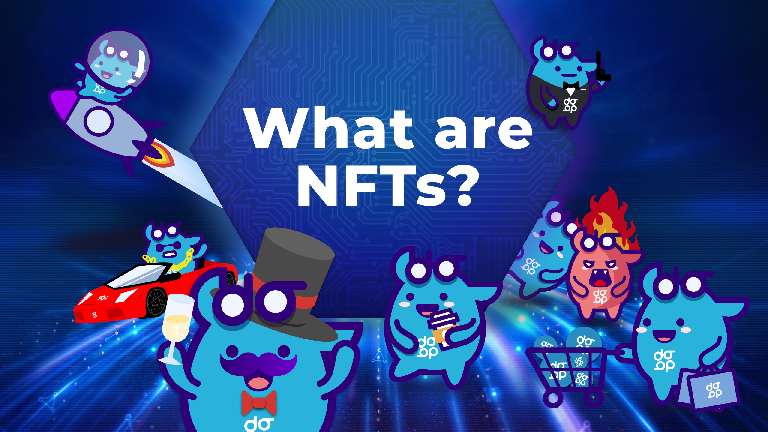What are NFTs?

NFTs are digital representations of physical items like art, collectables, and other unique items that can be bought, sold, traded, and stored on the blockchain. The technology behind these tokens is what makes them so powerful.
NFTs are slowly becoming a big deal. You must know more about them if you want to make smart decisions about diving into the craze. NFTs are digital assets that can be traded, like Bitcoin or Ethereum. They have unique properties and characteristics, which makes them more valuable than just another crypto or coin.
How do NFTs work?
NFT is an acronym for Non-Fungible Token. Tokens derive value from their utility—they are exchangeable for goods or services, are fungible and have real-world uses (like buying movie tickets). Non-fungible means that it is unique and not replaceable by other tokens. For example, Bitcoin is a fungible token. It has value, but each Bitcoin has the same value and is interchangeable. NFTs are more like collectors’ items; one painting is not a stand-in for another. New art is usually found by using an nft drop calendar to find out when the hottest drops are coming.
Who’s really taking part in the NFT market?
NFTs may have been envisioned as a modern-age alternative to the fine-art trade. Artists can use the technology to earn revenue for designs that might otherwise not have a market. For instance, if you come up with a unique idea for a sticker line or a series of themed digital avatars, you might otherwise be limited to selling them on the Android or Apple app stores or for similar niche purposes. But as NFTs, your potential buyer list is much larger as it’s not restricted by a platform.
Buyers are varied. Some are simply looking to support their favourite artist financially. Of course, you also get to use an NFT you buy as, say, your profile picture on social media, netting you bragging rights. However, some collectors look to get in on the ground floor by buying NFTs they like and holding them. The plan is to wait for the technology to pick up steam the way Bitcoin did and then sell the artwork they own for a profit.
So is NFT just about art?
Though NFTs may have been conceptualised as a way to own digital art, many companies are experimenting with alternative uses for the technology. Since the core system involves a digital certificate of ownership, some companies are using it innovatively to connect to real-world objects. Nike, a company that often struggles to clamp down on bootleg products that infringe on their sales, is experimenting with using NFTs to verify the authenticity of their sneakers.
Other companies are turning NFTs into entertainment avenues in the metaverse, incorporating them into trading card-like games, items for platform-specific digital avatars, and more.
Read more: Hacks For Finding NFT Projects
So, are there no negatives to NFTs?
Well, not everything is hunky dory with the system just yet. For one, ownership is a complicated process where NFTs are concerned. A piece of art can get stolen by hackers and scammers who then turn around and sell it online as an NFT. That becomes a problem if one has unknowingly purchased a stolen piece of art. Additionally, there is also the possibility that you’ve paid big bucks for a one-of-a-kind NFT, only to realise the company that issued it is now releasing 50 more, immediately tanking the value of the piece you own.
So no, NFTs may not be ready just yet to replace traditional art completely. However, it might only be a matter of time before the kinks are ironed out, and the adoption rate goes up. At that point, who knows where NFTs will take us?
Buy ETH to INR with ZebPay India’s oldest and secure crypto exchange.